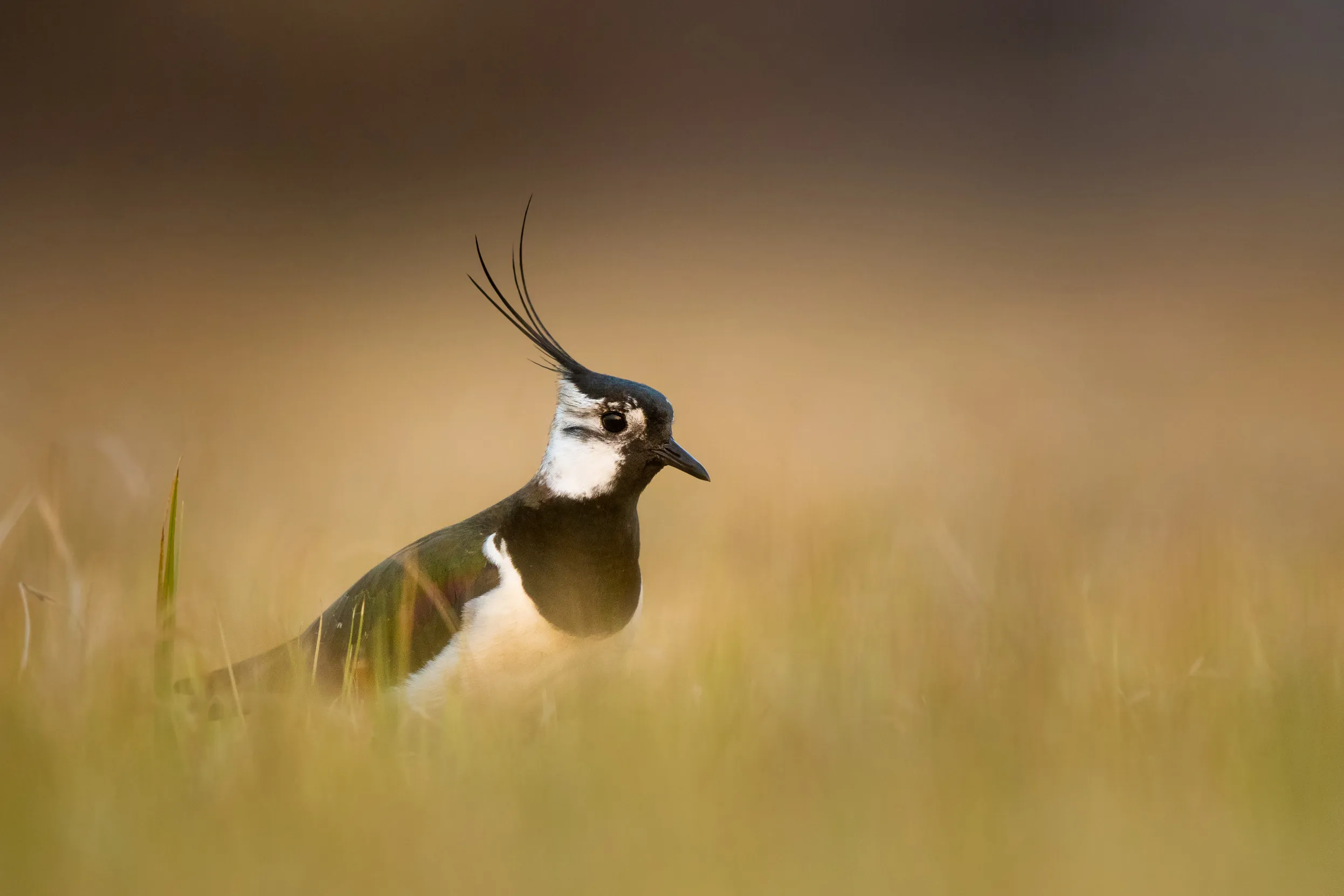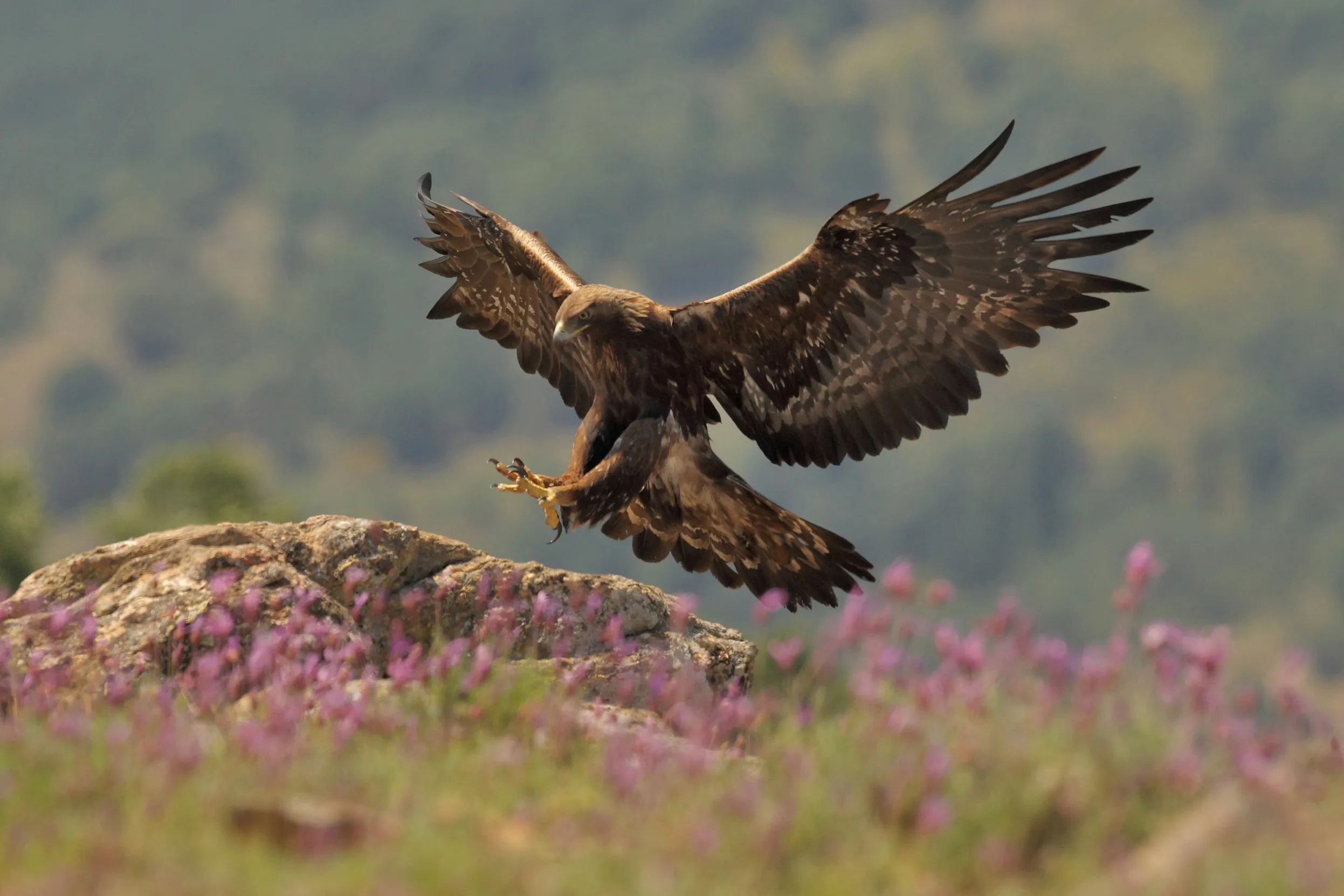A guide to upland habitats
From craggy mountain peaks to ancient forests and flower-filled meadows, the UK’s upland landscapes are made up of a patchwork of different habitats. Find out more about these special places – and the species that call them home – in our handy guide.

On this page
Montane habitat
Montane habitats occur in the zone above the original tree line – typically 600 to 700 metres above sea level, but much lower in the north and north-west of Britain. These habitats, which are made up of a mix of grass, sedge, moss heath and dwarf shrubs are largely confined to Scotland, northern and north-west England and north Wales.
What wildlife lives here?
In Scotland the montane zone is home to scarce breeding birds like Ptarmigans, Dotterels and Snow Buntings, as well as very rare Purple Sandpipers. Mountain Hares are also found in the montane zone.
Blanket bog
Blanket bogs are soggy habitats, fed by rain, that are found throughout the UK uplands. They’re made up of a variety of different types of peatland and get their name from the way the peat forms a ‘blanket’ over the underlying ground. Blanket bogs cover almost 2.5 million hectares of the UK uplands, with the largest and most intact areas found in northern Scotland and the Western Isles.
Peat is formed by partially decaying plant material that builds up very slowly over time. As it forms, peat locks away carbon, making it incredibly important in the fight against climate change.
Healthy blanket bogs are wet places, characterised by a high water table. They’re covered by a spongy layer of peat-forming bog mosses (particularly Sphagnum mosses), as well as other specialised peatland plants, like sundews and cotton grasses. They also feature a sparse covering of dwarf shrubs, such as heather.

Today, large areas of blanket bog are in poor condition, largely because of the way they have been used and managed. To improve their productivity, particularly for livestock grazing and grouse shooting, blanket bogs have been drained, burnt, grazed (by livestock and deer), planted with trees and cut for use as fuel. In some parts of the UK blanket bogs have also been damaged by pollution.
When blanket bog is in poor condition it may no longer be forming peat and is called ‘inactive’. Instead of absorbing carbon, dry, damaged peat actually emits it, contributing to climate warming. Because of their importance in tackling the nature and climate crisis, major efforts are underway by the RSPB and other organisations to restore degraded blanket bogs across the UK.
Find out more about our work:
What wildlife lives here?
In Scotland and England, blanket bogs support internationally important numbers of breeding waterfowl (including Black- and Red-throated Divers, Common Scoters and Wigeon), Arctic Skuas and wading birds (such as Golden Plovers, Dunlins, Greenshanks and Wood Sandpipers). Birds of prey call these places home too, including Golden Eagles, Hen Harriers, Peregrine Falcons, Merlins and Short-eared Owls. Blanket bogs also support much of the wintering population of Greenland White-fronted Geese.
Upland heathland
Upland heathlands are found throughout upland areas of the UK, where there are shallow peat and mineral soils. They occur in the zone above enclosed farmland, but below montane habitats. Upland heathlands can be wet or dry, depending on the local conditions, and they’re made up of a mix of dwarf shrubs.
For many years, upland heathland has been burnt on rotation to create suitable habitat to support large numbers of grouse for shooting, as well as livestock grazing. Today, these largely open habitats tend to be dominated by Common/Ling Heather and Bell Heather, alongside a range of berry-bearing shrubs including Crowberry, Blaeberry and Cowberry. Arctic Bearberry is more common in higher more exposed parts of the uplands. In wetter areas, where wet heathland is more prevalent, Ling Heather is joined by Cross-leaved Heath.
What wildlife lives here?
In northern England and parts of Scotland, upland heathland is home to Red Grouse and internationally important numbers of Golden Plovers, Curlews, Merlins, Hen Harriers and Short-eared Owls. Although far less common than they once were, Black Grouse can be found in areas where heathland, grassland and woodland habitats occur in close proximity. Twite are also increasingly scarce, but can still be seen in some areas of upland heathland.
Upland grassland
Upland grassland is made up of a mix of grasses and sedges. Like upland heathlands, these grassland habitats are found in the area between the upper limit of enclosed farmland and the start of the montane zone.
Today, upland grasslands are largely used for sheep grazing and are characterised by Matt Grass, Purple Moor Grass, Sheep’s Fescue and Heath Rush, interspersed with dwarf shrubs. In some places, overgrazing and intensive burning have resulted in grassland replacing areas that were once heathland. In many places, Bracken has spread onto upland grassland, particularly in places that have a history of burning and grazing.
What wildlife lives here?
Buzzards, Kestrels, Peregrines, Ravens, Meadow Pipits, Skylarks, Cuckoos, Wheatears and Ring Ouzels can all be found on upland grassland. In wetter areas, you could see Curlews, Snipe and Lapwings.
Mixed upland woodlands and scrub
The uplands were once much more wooded than they are today, with a mix of native broadleaf trees, including Sessile Oak, Ash, Birch, Rowan and Alder, as well as scrub, such as Hawthorn, Willow, Juniper and Gorse. In places, remnant semi-natural and planted broadleaf woodland remains, providing a reminder of how these landscapes once looked.
What wildlife lives here?
Upland woodlands support important numbers of declining birds, including Wood Warblers, Pied Flycatchers, Tree Pipits, Redstarts and Whinchats.
Native pinewood
Once widespread across the uplands of northern Britain, native Scots Pine is now restricted to a tiny fraction of its former range, with what remains restricted to the northern Highlands of Scotland. Over many generations, these once mighty woods have been cleared by humans, to make way for livestock farming and hunting, particularly of Red Grouse and Red Deer. Today, work is underway to protect and restore Scots Pine across parts of its former range. Deer control is an important part of this work, as lower numbers of deer mean that the trees saplings have a better chance of growing into mature trees.
Find out more about our work to restore pinewood:
What wildlife lives here?
These ancient woodlands are home to some of Scotland’s most iconic wildlife, including Capercaillie, Scottish Crossbills, Red Squirrels, Pine Martens and Wildcats.
Plantation forestry
Vast areas of non-native plantation forestry (especially Sitka Spruce and Lodgepole Pine) were planted in the uplands, particularly following the creation of the Forestry Commission in 1919 and the introduction of incentives and tax breaks in the 1970s and 1980s. This resulted in the loss of huge swathes of upland blanket bog and heathland, particularly in Wales, northern England, south Scotland and in the northern Highlands of Scotland.
To create suitable conditions for planting, the ground in these areas was drained, deep ploughed, fenced (to keep out deer) and fertilised. This had a devastating impact on the ability of the land to store carbon, and negatively affected water quality and the flow of water over and through the ground (leading to increased flooding).
What wildlife lives here?
When areas of forestry were planted, they destroyed the open habitat that specialist birds like Golden Plovers and Curlews rely on. These birds were displaced and replaced by generalist woodland birds, like Blue and Great Tits. Newly planted areas of forestry may continue to support breeding Hen Harriers and Black Grouse for a while, but as the trees mature and the canopy closes over, these birds are also displaced.
Upland meadows & pastures
In the uplands, hill farms usually have a small area of enclosed grassland, surrounded by walls or fences, at the bottom of the valley. These areas have usually been ‘improved’ with farmyard manure and lime/slag so that they can be used for lambing, livestock grazing or growing winter fodder (hay and haylage).
Areas of in-bye are often immediately adjacent to more extensive areas of grazing land, including open areas of grassland and heathland that are managed as common land or are used for common grazing. Today, little in-bye land is cultivated.
What wildlife lives here?
Wetter fields are important for breeding waders like Curlews, Lapwings, Redshanks and Snipe. They may also provide important foraging sites for birds breeding on nearby areas of bog or heathland, such as Golden Plovers, Curlews and Dunlins. When traditionally managed, upland hay meadows are a riot of colour in summer and support a diverse range of plants and invertebrates.
Upland lakes & lochs
Water is everywhere in the uplands. Lochs and lakes are a characteristic feature of many upland areas, as well as smaller nutrient-poor pools and small lochs (known as lochans) which feed water into a network of streams and rivers.
In winter, snow and rain are common, particularly in the montane zone. Where the geology and terrain are suitable, fens and flushes are formed when the snow melts or when water emerges from upland springs.
Wet ‘carr’ woodland, which is characterised by Willow and Alder trees, is a feature of some upland areas, and in parts of the Caledonian pine forest, ancient and stunted Scots Pines grow in boggy areas.
Elsewhere, the cool, moist temperate climate of upland areas, with frequent rain and near permanent waterlogging of the ground, provides ideal conditions for the formation of peat and peatland pools.
What wildlife lives here?
Upland wetland habitats support a huge range of flora and fauna, including Black- and Red-throated Divers, Goldeneyes, Common Scoters, Dippers, Grey Wagtails, Common Sandpipers, Red-breasted Mergansers and in a few places, Red-necked Phalaropes.
Other upland habitats
Inland cliffs and scree slopes are an eye-catching feature on hills and mountains throughout the uplands. Cliff ledges, which are beyond the reach of hungry deer and sheep, offer a refuge for rare alpine plants that were more widespread when there were fewer grazing animals. These cliff ledges are also used as nesting sites by Ravens, Golden Eagles, Peregrine Falcons and Ring Ouzels.
Limestone pavements are another dramatic upland habitat. These are huge, flat slabs of limestone rock, criss-crossed by cracks and fissures that can be several metres deep. They are home to an array of different plants, with shade-loving species, like ferns, thriving in the fissures, and light-loving species, such as Common Rock-rose, flourishing in the more exposed areas.
There are only around 3,000 hectares of limestone pavement in the UK, with the best examples in the north-west Highlands of Scotland, parts of Yorkshire and in West Fermanagh.
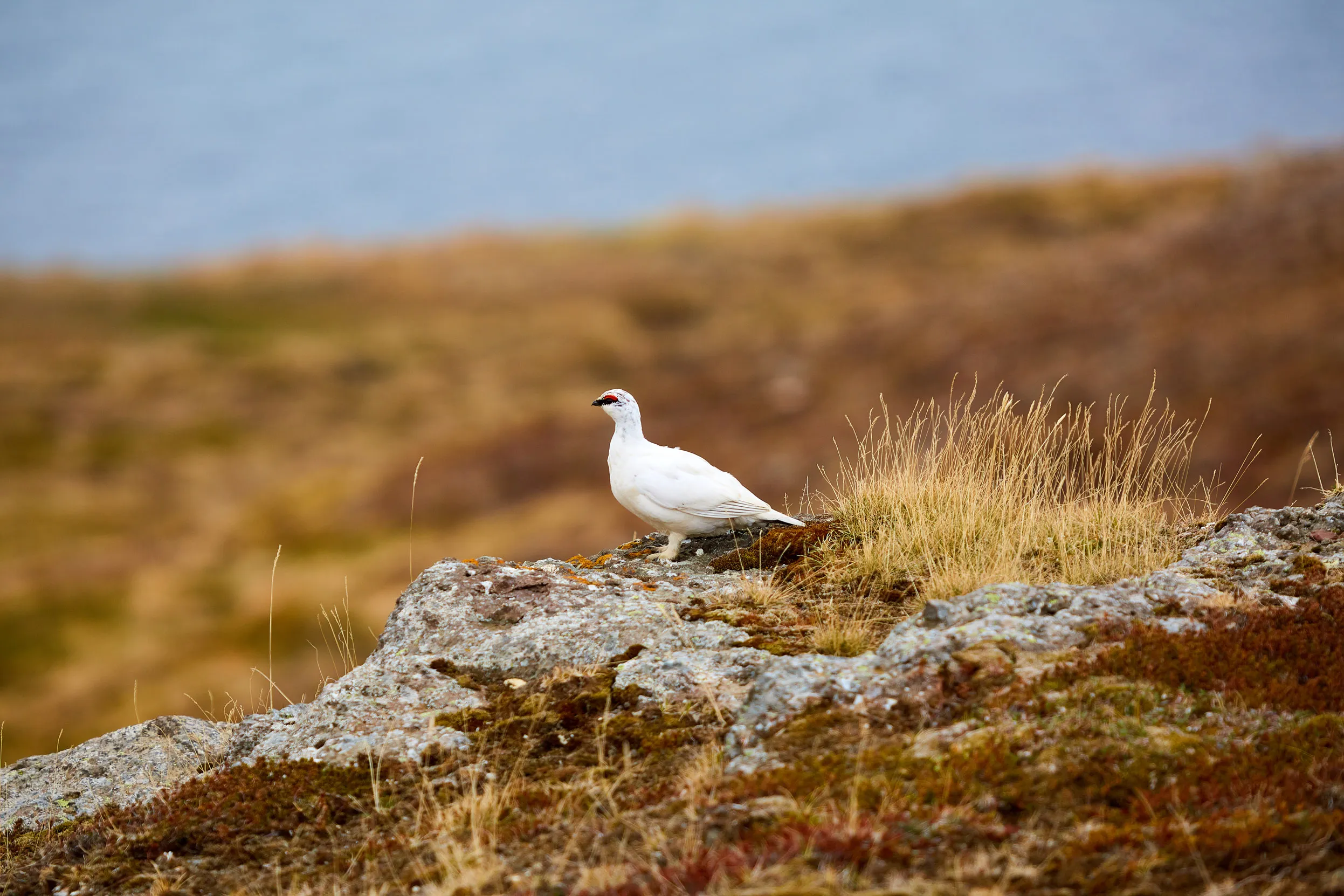




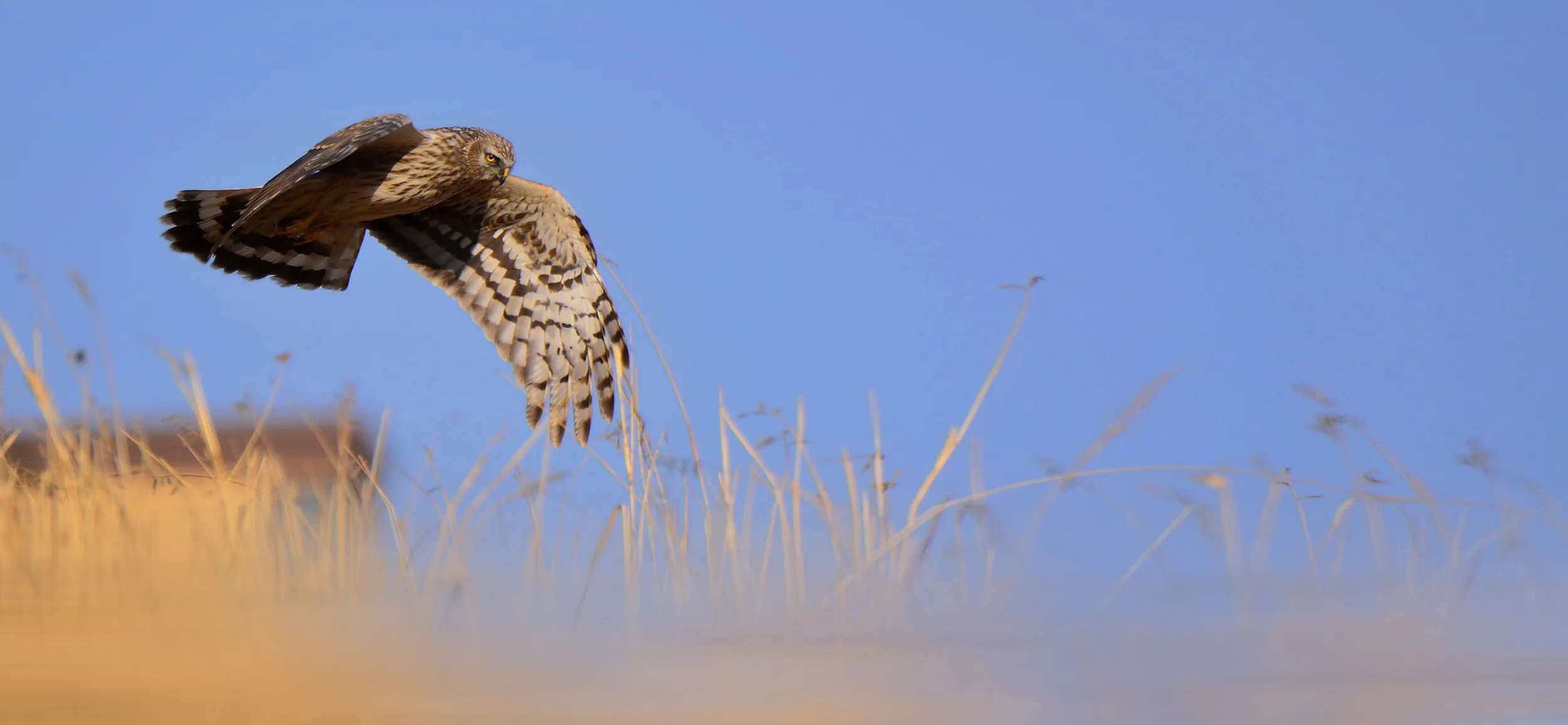

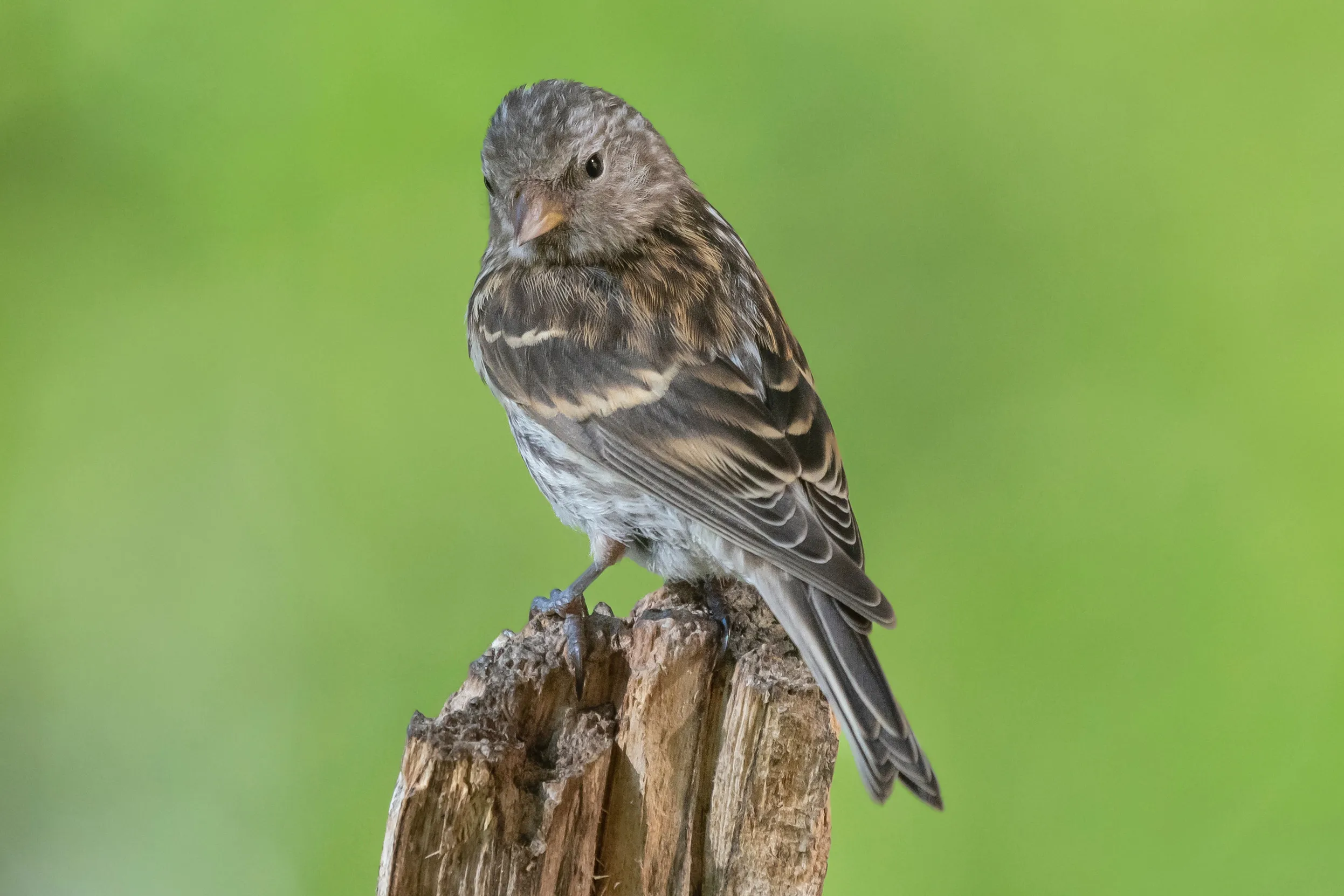








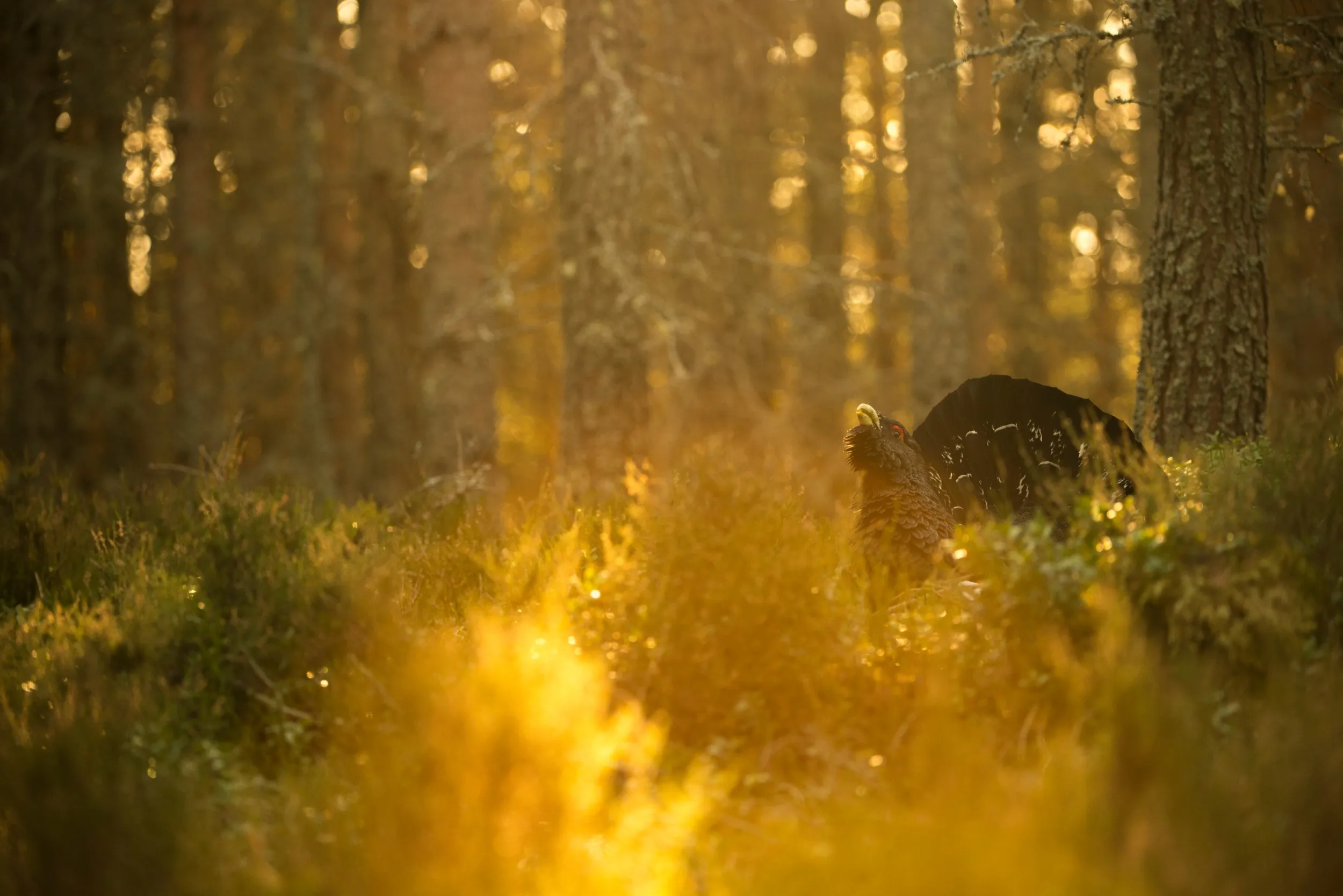

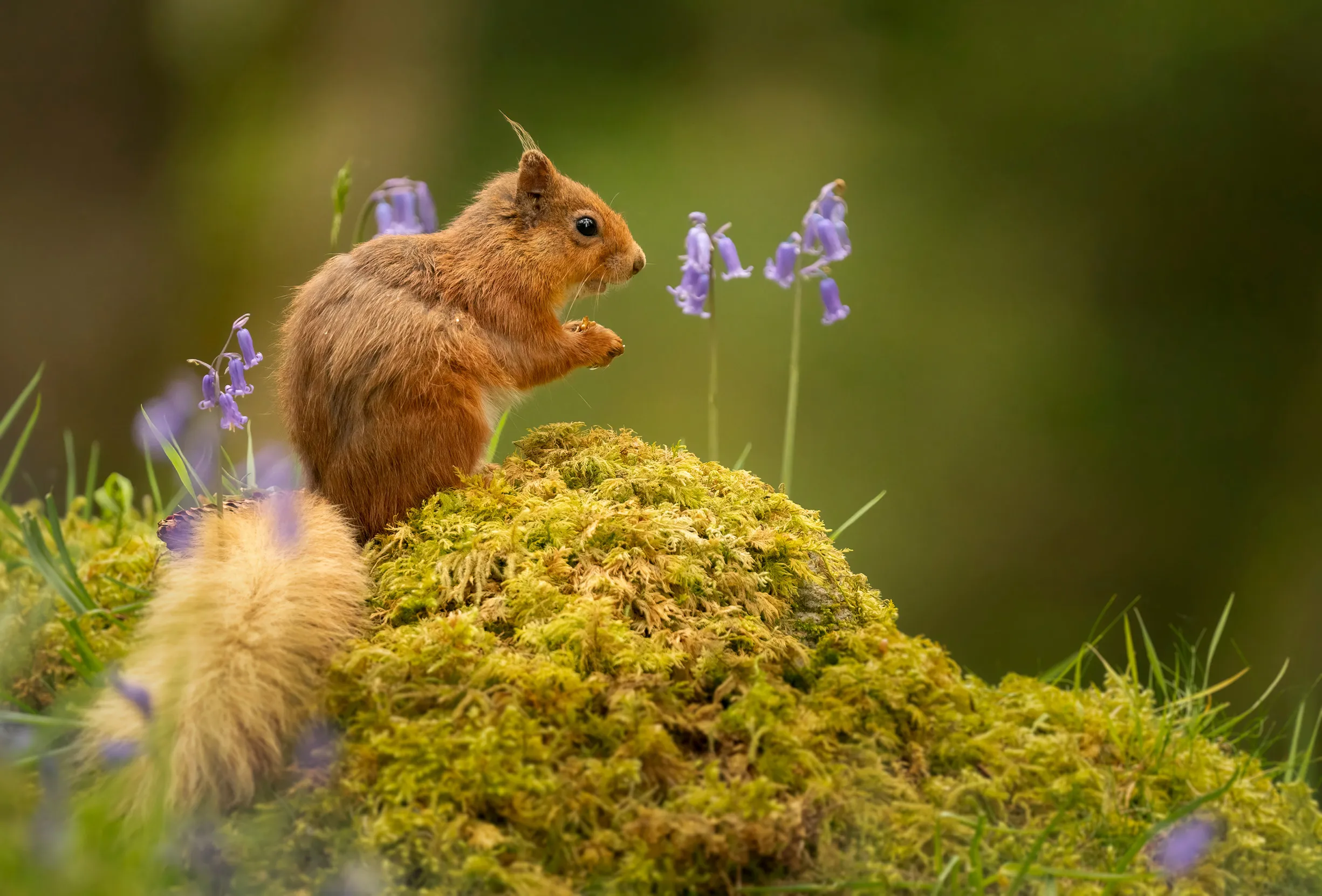



.jpg)
